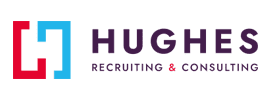If your inclusive hiring practices are mainly performed to comply with regulatory standards, you might be missing out on real opportunities. Diversity should not be about meeting requirements. It’s a genuine formation of a diversely unified workforce.
Instead of simply ticking boxes and showcasing a diverse organization, revolutionize your talent acquisition with inclusive hiring—one that can actually drive innovation, enhance problem-solving, boost employee engagement, and improve organizational performance.
How Does Diversity Drive Innovation and Engagement?
The concept of Diversity, Equity, and Inclusion (DEI) is no longer just a trend to improve the lives of underrepresented groups. It has become a strategic advantage that enhances an organization’s innovation and creativity.
Innovation requires new perspectives.
People from different backgrounds can bring fresh perspectives, unique experiences, and inspiring ideas. According to Forbes, diverse teams make better decisions 87 percent of the time.¹
With a diverse workforce, your organization can:
- Be critically aligned in its decisions, ensuring various angles are considered.
- Challenge inefficiency using different points of view.
- Enhance customer relations, products, and services. As more businesses become globally available, they’ll have to understand various cultures and backgrounds.
- Provide tailor-fit solutions that align with each region it operates in.
Employee engagement increases with a sense of value.
Fostering diversity also leads to better employee engagement, satisfaction, loyalty, and brand image. With an inclusive culture, your employees feel valued and appreciated for what they can bring to the table, instead of who they are and where they came from.
Engaged employees are more likely to put in the effort with motivation and dedication. In fact, diverse teams can outperform competitors by 35 percent, according to McKinsey.²
11 Inclusive Hiring Practices for a Diverse Workforce
So, how can you remove unconscious bias, reduce workplace anxiety, and create an inclusive brand image? Start with hiring. This inclusive recruitment checklist will help you improve your candidate experience and create a thriving organization.
1. Define what diversity is to your organization.
The main challenge with diversity and inclusivity is understanding other people’s perspectives. What might be considered funny or natural to some might be seen as discrimination by others.
According to the World Justice Project, 70 percent of countries have seen worse discrimination since 2015.³ While many laws and regulations have been passed to combat bias, there’s still much to work on. Since people have varying perspectives, we need to define the parameters to effectively create an inclusive culture.
- Create clear, inclusive guidelines.
- Recommend the right terms to use to avoid discrimination.
- Organize workshops to educate your employees.
- Provide sanctions and penalties for non-compliance.
Read more: How HR Managers Can Stay Updated on Employment Laws
2. Create fair job descriptions.
As an employer, it might be difficult to write inclusive job descriptions without using jargon. However, not everyone can grasp these terms easily.
Instead, focus on the skills, requirements, experiences, and competencies you need.
Try using inclusive language and gender-neutral words, such as:
- workforce instead of manpower
- humanity instead of mankind
- entrepreneur instead of businesswoman
This way, your descriptions don’t focus on specific genders, and won’t be seen as a basis of employment.
3. Elevate your website and social media accounts.
Diversity should not only be seen in your job ads, but also in your company websites and accounts.
- Use diverse images.
- Use user-friendly fonts for people with dyslexia.
- Utilize different formats like videos and downloadable files.
- Add alternative texts. Also called alt text, this is a brief description of a photo that appears if the image doesn’t load.
- Add closed captions to videos.
- Comply with standard guidelines such as the Web Content Accessibility Guidelines (WCAG) or Americans with Disabilities Act (ADA).
4. Advertise on different platforms.
Aside from the usual job boards, advertise your open positions on different channels like social media, community networks, niche job sites, job fairs, online communities, gig economy platforms, or targeted ads.
You can use employee referral programs to encourage your existing employees to help find candidates for you. These methods will increase your chances of finding talented and diverse candidates.
5. Make inclusion one of your core values.
Your employer branding will make a difference in your inclusion efforts. Employees can easily see genuine dedication to inclusion. If you haven’t reached your goals, be upfront about it. Share your milestones with your employees and on your websites.
Make sure that you practice inclusion in every aspect of the business.
- Instead of hiring external candidates for managerial positions, promote loyal, hard-working employees and invest in their career development.
- Give each employee the opportunity to showcase their skills instead of relying only on high-performing individuals.
Read more: How Skills-Based Hiring Is Transforming Talent Acquisition
6. Provide equal career opportunities.
An inclusive workplace should provide the same employment options to every employee. Make sure that everyone understands how they can grow, what they need to achieve their career goals, and the internal processes they need to fulfill. Regardless of an individual’s performance, he or she should still have access to the same talent development opportunities.
Additionally, you can track their progression and what obstacles might hinder them from advancing their careers. This will help identify areas for improvement, allowing you to provide the support they need to grow. You can provide specific training, mentorship, employee resource groups, or practical assessments to help your workforce grow.
7. Standardize your interview process.
Instead of looking at your candidate’s appeal, age, gender, or historical background, focus on their skills, relevant experiences, history, and potential. Inform your hiring managers and interviewers to focus on their applicants’ abilities.
It will be beneficial if you can create interview questions and hiring guidelines with specific role and industry questions that will help evaluate a candidate.
8. Form diverse interview panels.
Not all interviews require a panel. But if you need one, do it with diversity. This will help reduce bias and allow you to assess candidates from different perspectives. Intel improved diversity by 41 percent by including women and people from underrepresented groups in their panel interviews.⁴
9. Utilize technology.
Applicant tracking systems like Greenhouse, Lever, or Workable can help support inclusive hiring practices. These tools can streamline the hiring process by tracking candidate progress and removing bias to ensure fair evaluation.
Many applicant tracking system (ATS) platforms offer blind recruitment, which hides personal information to help reduce bias. Additionally, these systems help maintain compliance with diversity regulations, collect valuable insights for reporting, and ensure transparent hiring.
Read more: Smart Hiring: How to Use AI to Get the Best Candidate
10. Beware of algorithm bias.
While technology can help assess candidates and remove bias, it is still based on the data we feed into it. If an AI analyzes biased information, there’s a chance it can perpetuate that prejudice among underrepresented groups.
Before partnering with a service provider, understand how their system works. Look for customer reviews, ask how they mitigate risks, and request transparency regarding their data sources. This will ensure that you provide an inclusive hiring process and not preserve bias in your tech stack.
11. Measure your efforts.
To help improve your recruitment process, adjust your methods and practices to align with industry changes. Incorporating diversity and inclusion is a long process. It requires continuous effort for improvement, especially if you’re experiencing undesirable results.
To create a more inclusive hiring strategy:
- Regularly assess your hiring metrics
- Use data-driven insights
- Implement feedback
Inclusivity is an ongoing journey, and fine-tuning your approach will help you build a truly equitable and inclusive team.
Read more: The Metrics That Matter: How to Measure Success in Recruitment
Be one of the inclusive hiring companies working with Hughes Recruiting and Consulting.
If you’re looking to access a diverse talent pool, Hughes Recruiting and Consulting is the right partner for you. Incorporating diversity and inclusion in recruitment is no easy feat.
This is why we dedicate time and effort to continually practicing inclusion in our hiring strategies. Through our inclusive hiring methods, we help organizations build strong and unified workplaces.
Contact us today and connect with talented individuals in the market.
References
- Larson, Erik. “New Research: Diversity + Inclusion = Better Decision Making at Work.” Forbes, 10 Dec. 2021, www.forbes.com/sites/eriklarson/2017/09/21/new-research-diversity-inclusion-better-decision-making-at-work.
- Hunt, Dame Vivian, et al. “Why Diversity Matters.” McKinsey & Company, 1 Jan. 2015, www.mckinsey.com/capabilities/people-and-organizational-performance/our-insights/why-diversity-matters.
- “Discrimination Is Getting Worse Globally.” World Justice Project, 21 Mar. 2023, worldjusticeproject.org/news/discrimination-getting-worse-globally.
- Taylor, Tess C. “12 Inclusive Hiring Practices Your Organization Should Implement.” AIHR, 13 Sept. 2023, www.aihr.com/blog/inclusive-hiring.

























